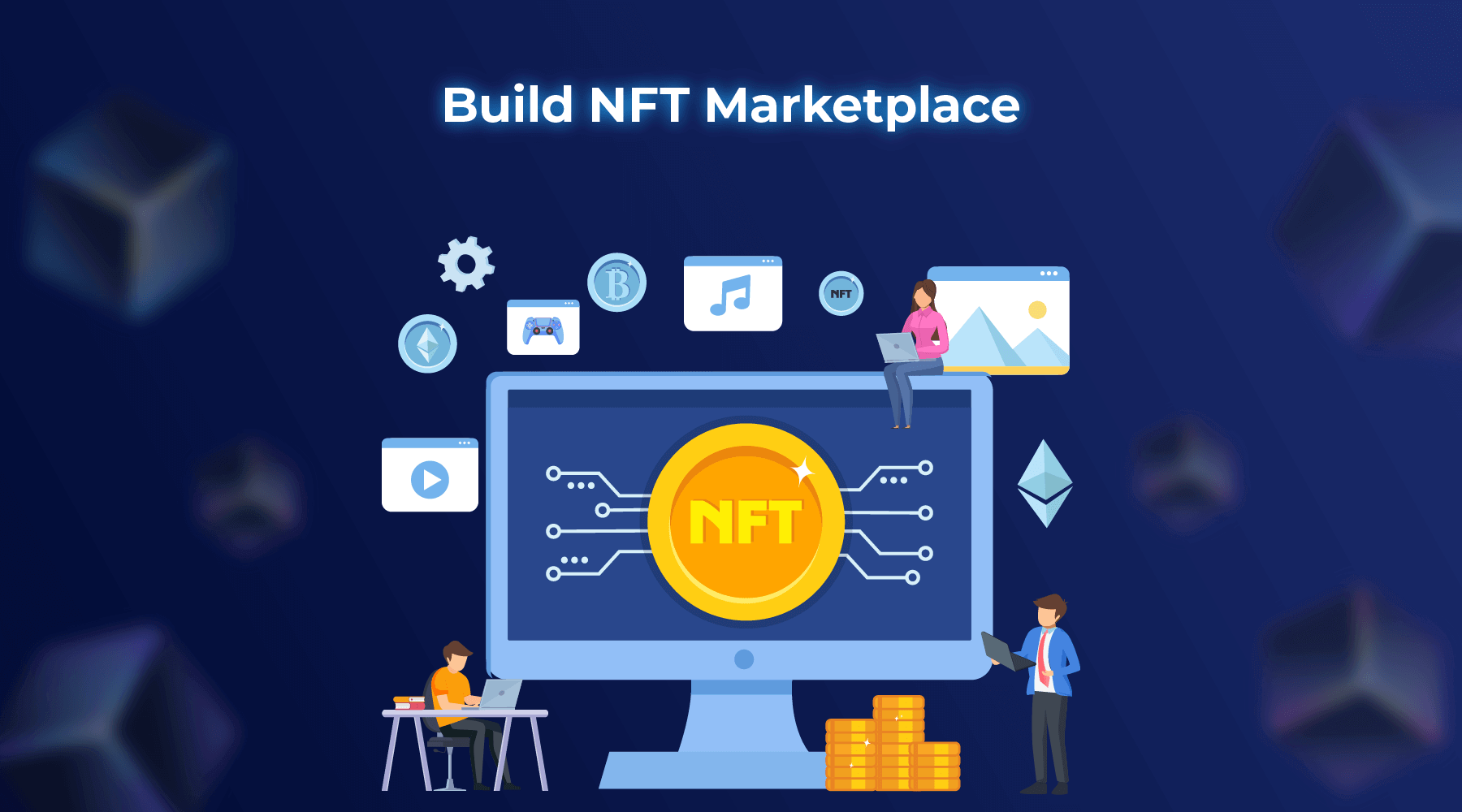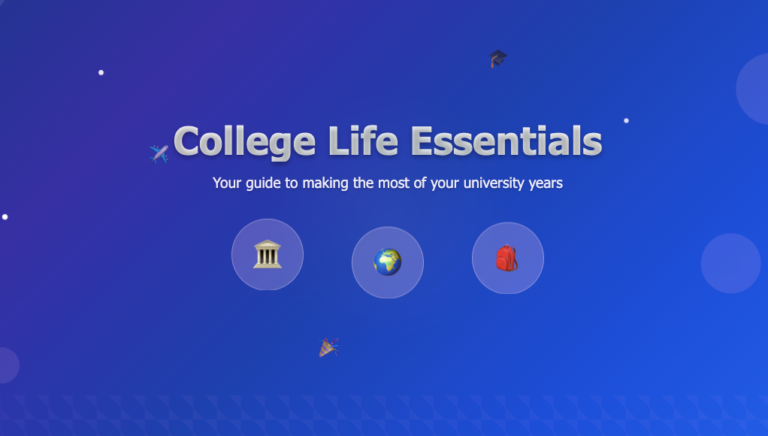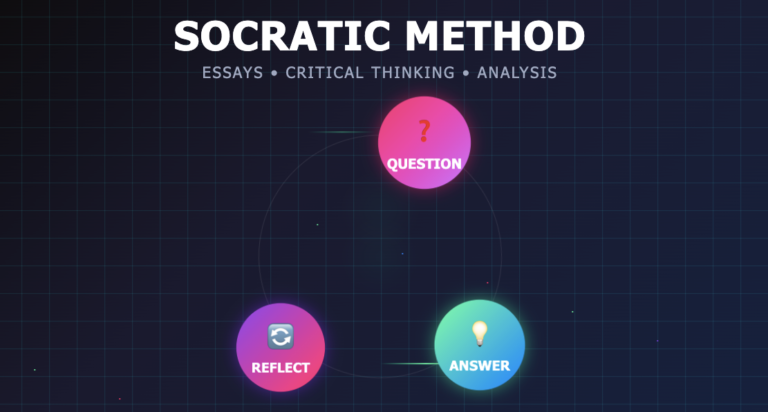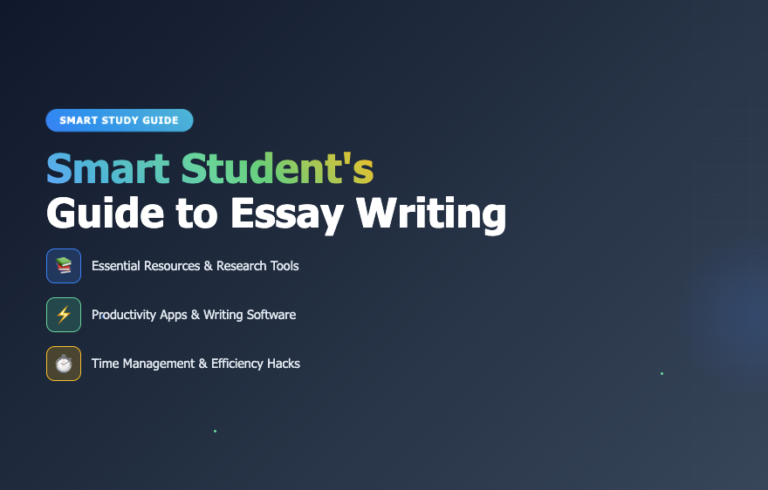
Modern technology makes it possible to purchase and sell practically everything, including digital characters, collectibles, cars, artwork even certain special experiences. Non-fungible tokens, or NFTs make it all possible. They are asking outrageous prices for the goods such as millions of dollars. $2.9 million was the price at which the first tweet ever sold, A group of NFTs called The Merge sold for $91.8 million. NFTs are typically gaining traction, which forces cryptocurrecny out of the market and enables the blockchain to reach new heights.
Concept of NFT Marketplace?
An NFT marketplace is an online marketplace where a wide array of high-valued crypto-collectibles are sold via auctions. In this marketplace, the creators sell their non-fungible virtual products and the buyers or investors procure them by the use of cryptocurrencies such as Bitcoin or Ether. The NFT marketplaces charge an amount for every transaction where an NFT is purchased on the platform.
Once an NFT is purchased, the investor of the buyer gets a token. The token here is a unique identifier that consists of proof of ownership as well as information about the author, provenance, and authenticity. In an NFT marketplace, buyers can purchase various types of artwork, gaming assets, fashion accessories, memes, and a wide range of others online by making bids in the auction conducted.
Let us have a look at some of the top NFT marketplaces in terms of the highest trading volume.
- OpenSea ($1.45 million)
- Axie Infinity ($1.26 million)
- NBA Top Shot ($1.06 million)
- AtomicMarket ($850,840)
- Decentraland ($789,670)
Important Things to Know Before Building an NFT Marketplace.
With so much hype created about the NFT marketplaces, there has been a considerable volume of blockchain enthusiast entrepreneurs planning to build an NFT marketplace. In this regard, there are a few essential things to know before creating the NFT marketplace.
NFT Standards
Standards are NFTs’ driving force which guarantees that the asset would be acting in a specific manner and showcases the ways of interaction with the basic functionalities of an asset. Presently, there are two common standards used for the creation of non-fungible tokens.
- ERC721 – This standard makes use of mapping unique identifiers to the addresses representing the owner of the identifier. ERC721 offers a permission way of transferring the assets by the “TransferFrom” method.
- ERC1155 – This standard uses IDs that do not just represent one asset but an entire class of assets. ERC1155 proves to be much more efficient as compared to the ERC721 standard.
NFT Metadata
There is a concept known as ‘owner’ in the NFT marketplace. It offers a way to search for the owner of an NFT. For instance, while searching for the owner of 212022 in any NFT’s smart contract, you can see token 212022’s owner is ‘ABC’. This information can be then verified on NFT marketplaces like OpenSea. But now the question arises how do platforms like OpenSea understand what 212022 is and what are its unique attributes? It is precisely the situation where metadata comes into play. Metadata provides descriptive information for a specific token number or an ID like descriptions, pictures, or any additional features.
Legal Documentation for Creating an NFT Marketplace
In addition to the nomenclatures, knowing the legal documentation for creating an NFT marketplace is extremely important.
- Formation of company
- Terms of service
- Community standards
- Privacy policy
- Details of IP consideration
Working and Features of an NFT Marketplace
The working of an NFT marketplace involves a few simple steps that are described below.
- First, the users sign up for an NFT platform.
- The next step is to set up a crypto wallet on the platform for storing the non-fungible tokens and cryptocurrency.
- Then the users create an NFT and appropriately configure the parameters of the auction.
- Now, the collection is listed for sale.
- In the next step, the chosen platform moderates the items.
- Then the non-fungible tokens appear on the list for sale in the auction.
- In the auction, the buyers place their bids.
- At the close of the auction, the sellers receive notification regarding the top bids from the buyers.
- Finally, the platform handles the transfer of items as well as funds and closes the deal.
In return for work done for transferring funds and non-fungible tokens by the platform, the NFT marketplaces charge some fees on the selling amount. Here are some of the major features of the NFT marketplace that is going to be created.
1. Storefront – It is the section of the NFT marketplace that provides users with detailed information about the items such as their details, owner, bids, price history, and a number of others.
2. Live Auction Feature – Several non-fungible tokens can be sold to prospective buyers via the live auction feature. The feature contains various types of information such as the names of the tokens & seller, methods of payment to be used, picture, price, number of bids made by other buyers, and the time left for making the bids.
3. Search Functionality Option – The NFT marketplace must possess a category tagging and management functionality, thereby making it easy for the users to search for items that they are looking forward to buying on the platform.
4. Trending Collections – Certain non-fungible tokens get a high selling price if they are appropriately showcased in the ‘Trending Collections” section. Therefore, it is extremely important for the NFT marketplace that is being built to have a special ‘trending collections’ section that contains very useful insights such as average price, features or characteristics of the crypto collectible, name of the seller, total supply, and trading volume.
5. Create Listing Feature – It is a feature of the NFT marketplace that is specifically for sellers. The platform should be created in a way that allows the users with the feasibility to create listings, thereby enabling them to add the details of their NFT.
6. Auction and Buy – Any of the efficient NFT marketplaces must have auction and buying options where the users can easily add bid amount, expiration date, and a watch list that shows all details of the status of the bids.
7. Wallet – The marketplace should necessarily have a wallet that enables users to send, receive, and store non-fungible tokens as well as cryptocurrencies. Your users will have to make use of wallets for sending, receiving, and storing NFTs and cryptocurrencies. The NFT marketplace should either be created with its wallet or have the provision to integrate existing wallets to provide a seamless experience to the users.
8. Acceptance of Various Payment Methods – A good NFT marketplace should have different methods for payment like debit cards, credit cards, wire transfers, and net banking from buyers in addition to popular crypto wallets.
9. Instant Notification Feature – The marketplace should have an instant notification feature that sends all the latest information via emails and pushes notifications regarding real-time data about the launching of collectibles, new non-fungible tokens, upcoming auctions, and many more.
10. Provision for Round the Clock Customer Support – The NFT marketplace should come with a provision for customer support which can play a significant role in boosting the customer retention rate.
Steps to Build a Highly Scalable NFT Marketplace
Now, let us discuss the steps to build an NFT marketplace.
1. Defining the Niche – The first step towards building an NFT marketplace is defining the niche. The proper definition of niche is the key to success. Also, it is extremely important to be aware of the present market. There are two types of markets.
A vertical market is where the suppliers sell the items that rightly satisfy the needs of a specific target audience.
A horizontal market where the focus is on a wide array of products or services at the same time. This type of market is quite dynamic requiring a lot of investments as well as effort.
2. Choice of Role – There are three types of roles in the NFT marketplace platforms.
Buyers – They are looking for digital artworks or other assets and are willing to buy them, hence termed as buyers.
Creators – As can be understood from the name, they are the artists who create and design digital assets that further get tokenized as non-fungible tokens.
Administrators – They are the admin of the NFT marketplace platform. They are the ones responsible for managing and running the platform. They play a crucial role in the hassle-free exchange of funds between buyers and sellers as well as the ownership of the transfer of crypto tokens.
3. Documentation of the Project – The next step is to create detailed documentation of the entire project which is of immense importance. It is a cumbersome task involving a lot of time and effort. However proper documentation helps save a lot of money in building an NFT marketplace.
Prototyping – In this highly competitive market, delivering an efficient and effective product is not sufficient since the users have a lot of choices. Thus, it is of utmost importance to aim at delivering experiences that just deliver a functional product or service. It is precisely the situation where UI and UX come to the rescue.
The overall look and feel matter a lot in this regard. Thus, prototyping the UIs and mocks becomes an important step in the development of the NFT marketplace before the actual development starts.
Development – It is the stage where the entire developmental work takes place with the owner deciding the type of framework for the project. The development of the NFT marketplace is done keeping in mind optimum performance, functionality, reliability, efficiency, and operation.
Testing and Execution – It is the penultimate stage where the developed software is put to test and execution to check for all errors. The testing stage is aimed at finding the bugs and fixing them to make sure that the end product is of the highest quality.
Deployment – It is the final stage of building the NFT marketplace where the software after testing is ultimately implemented for use. After deployment, the software serves its intended purpose of use.
Cost of Developing the NFT Marketplace
Now, you have a clear understanding of NFT marketplaces. With the technology and complications involved in the development of an NFT marketplace, it is evident that a considerable volume of expenses would be incurred. The total cost of developing an NFT marketplace depends on several factors that are listed below.
| Factors | Average Costs |
| UX/UI Development | $2395 – $5040 |
| Authorization and Security | $3285 – $8640 |
| User Profiles | $2385 – $5040 |
| Home Page | $3645 – $10,080 |
| Search and Filters | $4005 – $11,520 |
| Product Page | $2385 – $5040 |
| Reviews & Ratings | $2565 – $5760 |
| Shopping Cart | $2565 – $5760 |
| Payments | $2385 – $5040 |
| Notifications | $2085 – $3840 |
| Ethereum Incorporation | $4005 – $11,520 |
| NFT management | $4005 – $11,520 |
| Inventory Management | $2385 – $5040 |
| Buyer Panel | $3045 – $7680 |
| Author Panel | $5085 – $15.840 |
| Admin Panel | $3775 – $10,200 |
| Total | $50,000 – $116,040 |
Top Use 3 Use Cases Of NFTs
In recent months, the worldwide NFT industry has established itself as a prominent and rapidly expanding subsegment of the digital assets market. The market used to be led mostly by sporting highlights and trading cards. Although NFTs took on new forms in the second part of the year, this resulted in the creation of several new market categories, including virtual real estate, gaming avatars, and fashion. Businesses, corporations, artists, and celebrities are using NFTs to communicate with their consumers and followers in a new and novel manner.
NFTs in Metaverse
The metaverse – a new type of virtual living – is becoming more popular with gamers. In tandem with the advancement of virtual and augmented reality technology, virtual worlds with unlimited experiences are progressively developing and becoming the preferred leisure channel for an increasing number of people. Furthermore, NFTs are playing an important part in the development of immersive and interactive metaverses such as Sensorium Galaxy.
Instead of scripted tales and predefined results, metaverses depend on user-generated material to serve as the connecting thread across virtual worlds, in contrast to traditional gaming. Members have complete control over the parameters of their virtual experience, from the appearance of their avatars to the dancing choreographies they want to attempt, who they want to connect with, what music concerts they want to attend, and everything in between.
Users may choose to cohabit with AI avatars or create virtual creatures that are capable of having intelligent discussions, performing their dances, and DJing unique sets in an AI-powered metaverse such as Sensorium Galaxy. Collaboration opens up a world of possibilities for content production that defies all expectations.
NFTs in Gaming
As a result of the expansion and maturation of NFTs, investors began to see the long-term potential of NFT and metaverse-based projects and initiatives. As a consequence, numerous non-traditional gaming firms with aspirations to construct virtual worlds have received tens of millions of dollars.
Gamers are increasingly choosing to enhance their knowledge, whether through subscription services such as the Xbox Game Pass and PSNow or by participating in games that operate on a freemium model, in which entry to the game is free but additional features, such as avatar skins, must be purchased separately. Fortnite and Call of Duty are two instances of free-to-play games that have achieved widespread popularity.
Among the most popular NFT-driven games today is Axie Infinity, which is a mix of CryptoKitties and Pokémon Go, replete with monster battles and other features. Small Love Potion ($SLP) tokens, which are based on the ERC-20 standard, serve as a kind of currency for raising Axies and may be traded outside of the game on global cryptocurrency platforms such as Binance. Axie Infinity presently has over 40,000 paying subscribers, $15 million in NFT volume per month, a $2 billion market capitalization, and partnerships with companies like Ubisoft, Binance, and Samsung.
The idea is to displace current game developers such as Minecraft and Roblox by giving creators genuine ownership in the form of non-fungible tokens (NFTs) and paying them for their engagement in the ecosystem as a result of their participation in the ecosystem.
NFTs in Real Estate
Real estate is both pricey and difficult to navigate. Even if you have the financial means to purchase a home these days, there is generally a significant amount of red tape to manage before you are given the keys to your new home.
When used in conjunction with blockchain, NFTs may serve as a secure and transparent means of transferring ownership. It is simpler to resolve legal paperwork and handle real estate transactions when a property is tokenized since it eliminates the need for middlemen.
Land is a limited resource, and mankind has been battling over it for millennia to secure it. A slew of virtual real estate companies have flocked to Decentraland to demonstrate their belief that it is a wise financial decision. Virtual land plots have been auctioned for as much as one million dollars in this virtual reality game in which participants may construct, purchase, and sell virtual structures.
Video games are rapidly being relied upon to offer their own NFT-driven metaverses. It was in The Sandbox, where the Winklevoss twins and other crypto giants made significant investments in virtual land. Nine plots of land in the Axie Infinity video game were auctioned for a total of $1.5 million in February.
Physical real estate is a part of the NFT real estate market. There are around 65 billion NFTs available via a well-funded company called SuperWorld, which has digitalized the actual world and mapped it into 100×100 meter plots. In this augmented reality environment, owners may build anything they want on their plots and see it as a 3D model. The majority of common blocks (including, most likely, your childhood house) sell for 0.1 ETH. A block of New York Avenue is presently listed for 1000 ETH.
Conclusion
After reading our guide, you most likely are aware of what needs to be done if you wish to develop an app for the NFT marketplace. Naturally developing a mobile application or the website for the marketplace is not an easy task. Solulab, an NFT development company however is prepared to make this procedure simpler. Startups in the content marketplace and cryptocurrency sectors have previously benefited from our assistance.
We understand your idea and create an interface, build it, and release it. You won’t have to think of it twice and will dominate the NFT marketplace. Solulab will allow you to create a project according to your needs and preferences.
FAQs
1. What is the price of creating an NFT Marketplace?
The typical price range for developing an NFT marketplace is $45,000 to $50,000. Additionally, technologies and tools, the complexity of the project, and other factors all affect how much it costs to establish an NFT marketplace.
2. Does NFT Marketplace provide profits?
Transaction expenses, bidding revenue, and royalty or secondary sales are some of the ways that NFT transactions might produce a sizable income. Your NFT marketplace may grow into a successful business that draws investors, artists, and collectors with correct execution,
3. Is creating an NFT free?
Yes, it is free to generate an NFT. For instance, you can create NFTs for free using NFT-inator. However, there is usually a minor price known as “gas” associated with minting. Lazy minting is the practice of deferring gas fees from the final buyer in certain marketplaces.
4. How can an NFT marketplace be created?
A user needs to have having minimum of two subscribers and pass verification to issue an NFT on binance. Creating a collection is the first step, followed by confirmation. Several categories are supported by the Binance NFT marketplace.
5. Can you use your phone to create an NFT?
Yes, you can use your phone apps to create an NFT from Google Play Store and App Store. These apps are 8-bit Painters to make NFTs that resemble 8-bit vintage video games, an NFT creator app offering a vast array of graphics, and GoArt.




